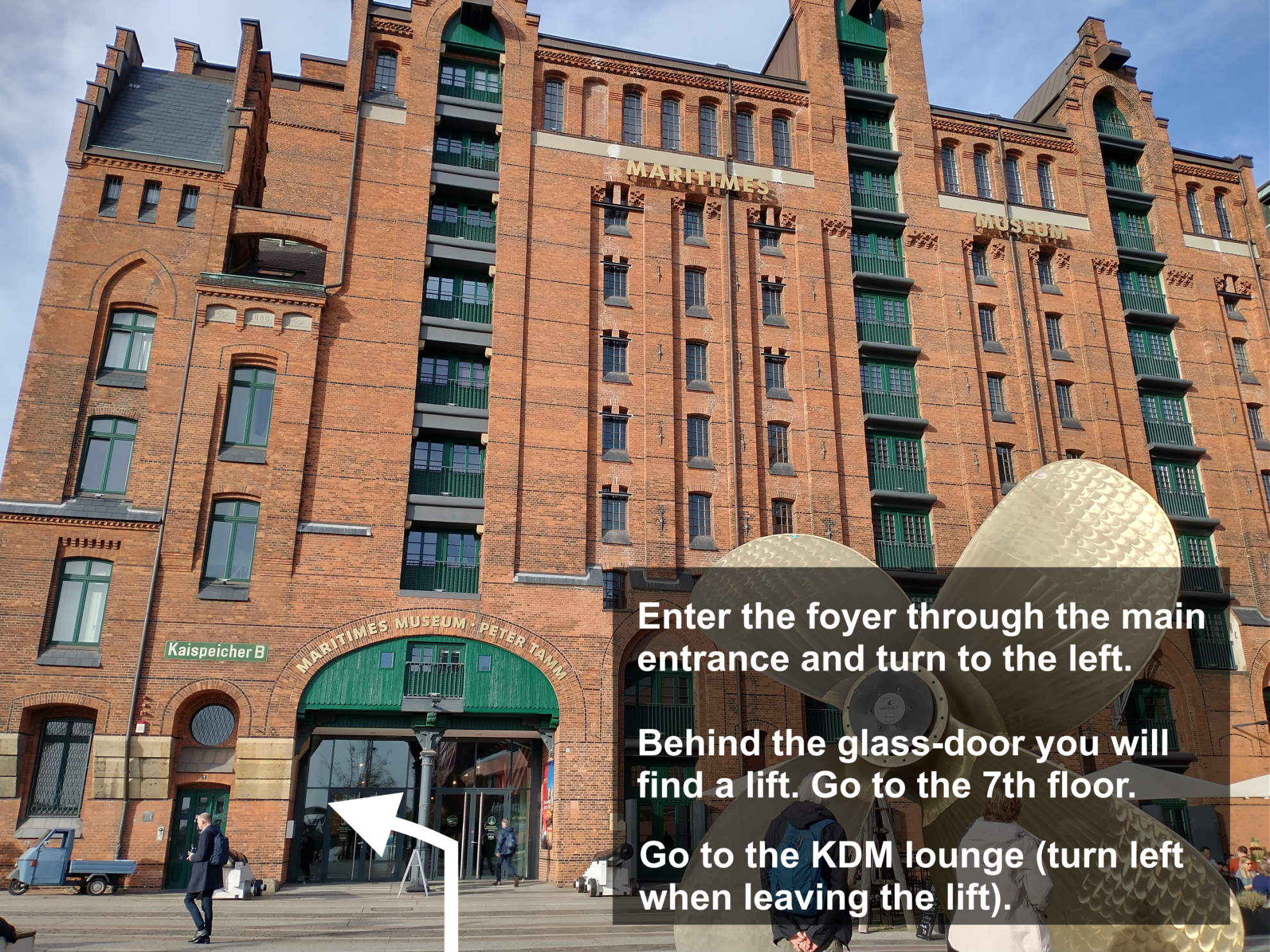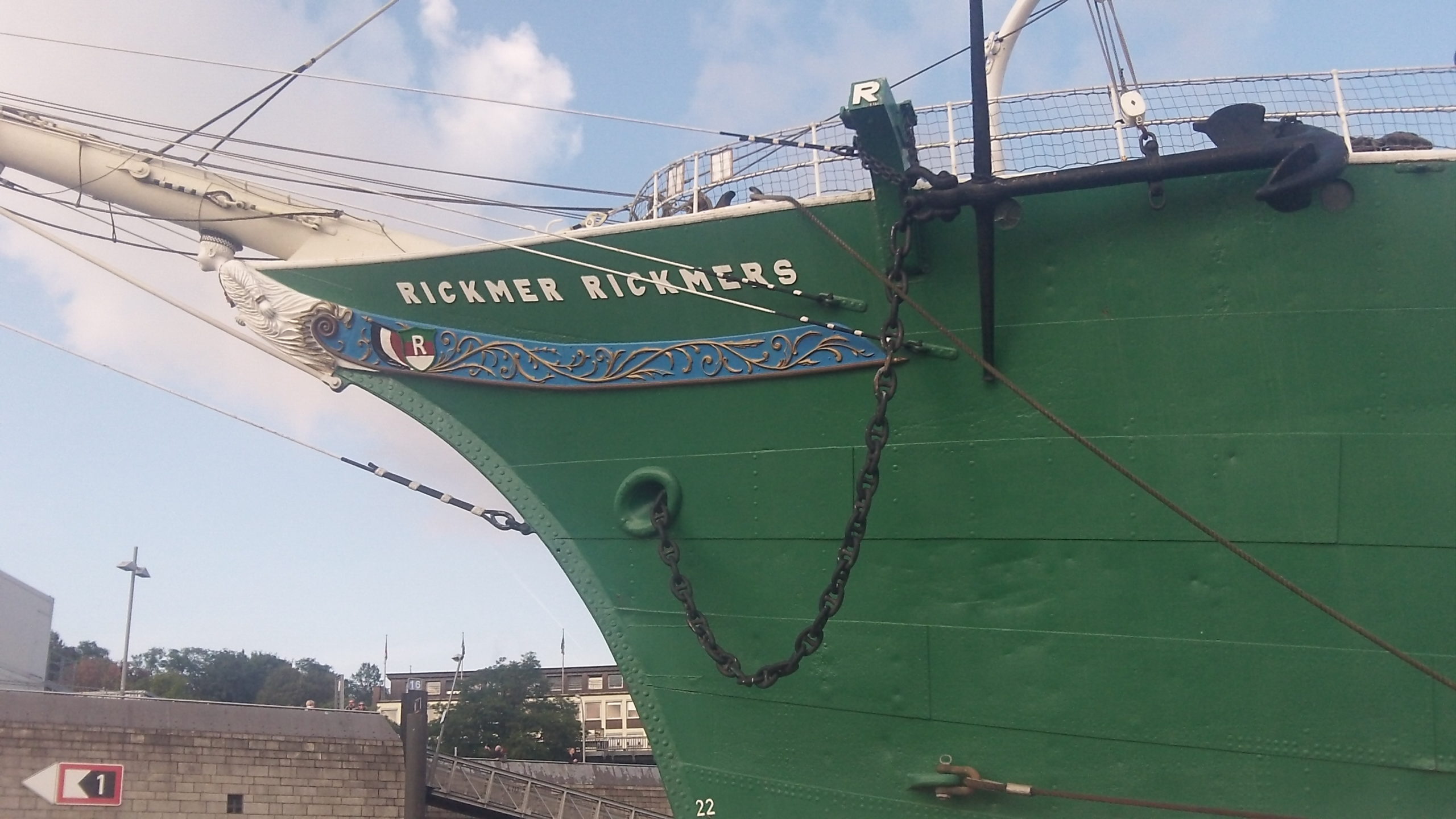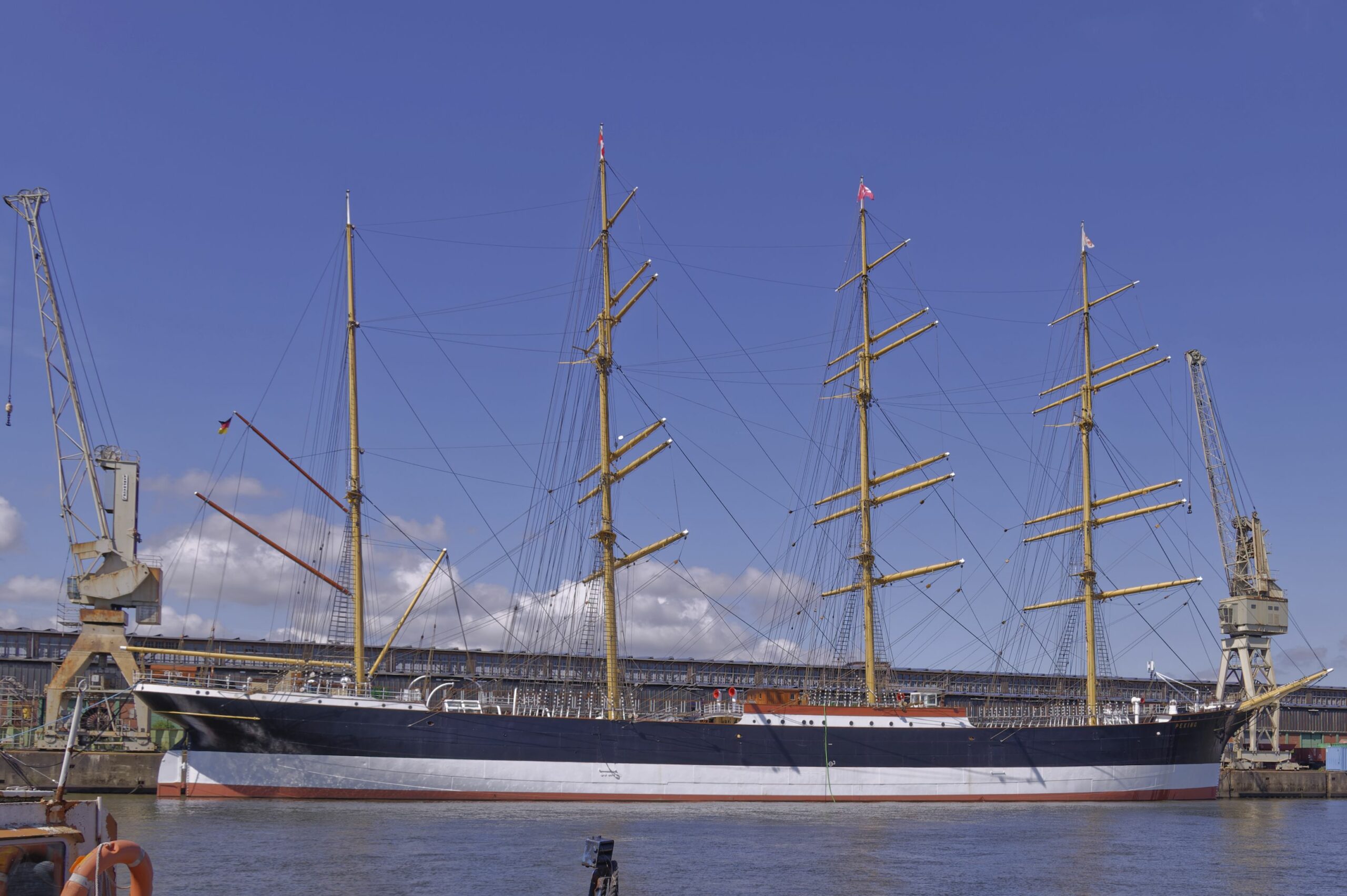Practical info
This information is relevant only for those attending the conference in person. Please note that this is not a public event and that it is not possible to register as listener. Nonetheless, anyone can follow the conference as remote viewer via the livestream.
Travel information
Venues
The main venue for both conference days on Saturday and Sunday (19. and 20. November) is the International Maritime Museum Hamburg (IMMH, Koreastraße 1, 20457 Hamburg), located in the Speicherstadt district, the historical “warehouse city”, which recently became a UNESCO World Heritage site.

The second venue is the main building of the University of Hamburg (“ESA M” lecture hall) at Edmund-Siemers-Allee 1, where the keynote lecture will take place on 18 November at 18:00. See more details here.
The walking distance between both venues is 2,7 kilometres, but as this is the centre of the city, there is a dense network of public transportation.
Accomodation
There are several hotels within walking distance to the IMMH, e.g. at the Überseering. This district has become gentrified so most hotels in this quarter are 4* or 5* hotels. Outside of the historic city centre are more reasonably priced hotels, which can be reached easily via public transport.
Public transport (metro and bus)
The closest metro stations are Überseequartier and Hafencity Universität (both U4), or Messberg (U1). Each of the stations is located approximately 300 metres walking distance to the IMMH (main conference venue).
The closest bus stations are at Koreastraße (bus line 111, 155, 602) and Osakaallee (bus line 111). Both bus stations are located in the immediate vicinity of the IMMH (ca. 100 metres).
Tickets, maps and timetables are offered by the public transport operator HVV on this website: https://www.hvv.de/en
Arriving by plane and metro
Hamburg’s airport is centrally located. Further details are available here: https://www.hamburg-airport.de/en
A metro station (S1) is located at the airport. From here, one of the metro trains can be taken to the Hauptbahnhof (central station), where an interchange is possible to the U4 at the train station’s northern wing (Hauptbahnhof Nord) or the U1 at the train station’s southern wing (Hauptbahnhof Süd). Tickets, maps and timetables are offered by the public transport operator HVV on this website: https://www.hvv.de/en
COVID-19 regulations in Germany
Although the COVID-19 lockdown has been lifted in early 2022, it is expected that new restrictions will be in place in autumn, which may affect your itinerary as well as the code of conduct at the conference venue. On the websites below, you will find the up-to-date information on the current regulations:
https://www.bundesregierung.de/breg-de/themen/coronavirus/faq-travel-1939244
As Hamburg is a self-governing federated city state, there might be some special rules in place. For further information, please visit:
https://www.hamburg.com/residents/settle/health/15856690/covid-safety/
Sightseeing for maritime-minded individuals
Speicherstadt & International Maritime Museum Hamburg (IMMH)
The Speicherstadt (literally: warehouse city) is the world-largest historical warehouse complex, covering an area of 26 hectares. Construction started in 1883 when thousands of oak-piles were driven into the river-bed of the Elbe as foundation. The buildings were erected in the locally characteristic red brick neo-Gothic architecture, a revivalist style, inspired by a romanticised and idealised medieval past. This style was popular in 19th-century Europe and North America, and culminated especially in Germany after it was unified as nation state in 1871 and reclaimed its medieval legacy as empire as a matter of raison d’État. The warehouse complex is characterised by multi-storey, long warehouse facades accessible via a Fleet (channel) on the one side and a street and railway tracks on the other side. It combines the utilitarian aspect of a modern port warehouse complex with a highly aestetic neo-Gothic architectural style, featuring little towers, alcoves, and glazed terracotta ornaments. The best views you will have from the channels in one of the harbour round trips: https://www.hamburg-travel.com/see-explore/round-trips-tours/harbour-round-trips/
The IMMH is located in the heart of the historical Speicherstadt district and we recommend to visit its excellent exhibitions before or after the conference.
At a walking distance of ca. 300-400 metres from the venue, there is also a dock for historic vessels at Sandtorhafen and “Harrys Hamburger Hafenbazar”, a mixture of a curiosity cabinet and rummage sale of items brought from mariners from all over the world, which has become a local legend.
Three-masted barque RICKMER RICKMERS (1896)
Permantently moored at the Landungsbrücken is the museum ship RICKMER RICKMERS, a three masted barque engaged in global trade, especially to the Far East and the United States. At the Landungsbrücken there are also various operators for harbour cruises through the channels of the Speicherstadt and Hamburg’s port, the second largest in Europe after Rotterdam’s: https://www.hamburg-travel.com/see-explore/round-trips-tours/harbour-round-trips/.

Four-masted barque PEKING (1911)
A visit and guided tour on the PEKING is part of the conference programme. We will visit the historic vessel on Saturday evening and a transfer from the venue to the ship will be organised by us. After the guided tour there will be a reception at the German Port Museum, to which this vessel belongs. Further details will be announced soon.

Intertidal shipwrecks in Hamburg
Hamburg has its own intertidal wrecks in the picturesque district of Blankenese. It is the wreck of the Finnish schooner POLSTJERNAN (1919-1926) and the barge UWE (1914-1975). Both wrecks are only visible at low tide, so you might want to check the tidal calendar before planning your visit. Blankenese itself is worth a visit. Historically, it was part of the county of Holstein and the percentage of seafarers was very high amongst its inhabitants. The quarter is characterised by small mansions, captain houses, beach cafés and long-winded alley- and stairways.
Övelgönne
Museum harbour of Övelgönne: https://www.museumshafen-oevelgoenne.de/